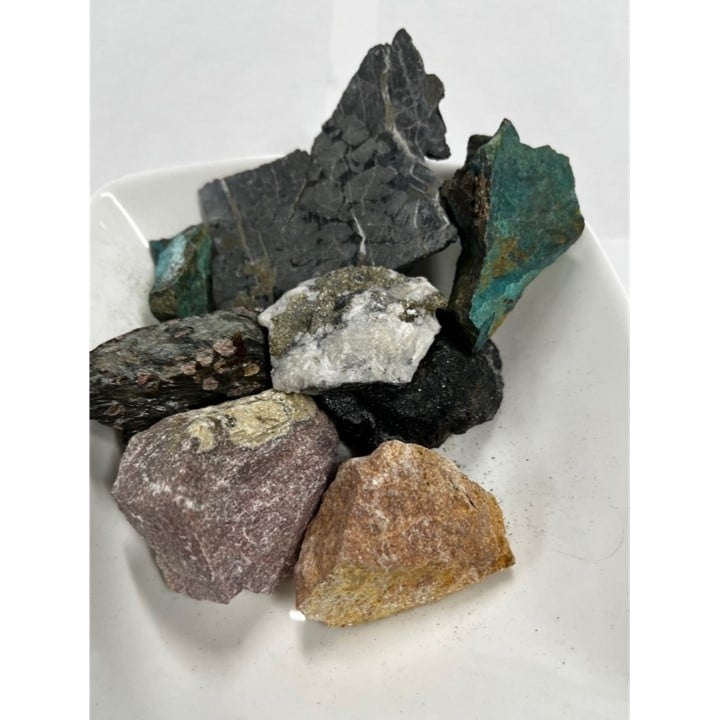Critical and Strategic Minerals and Materials
What are Critical Minerals?
Critical and strategic minerals or materials are natural resources vital for American economic prosperity and national security. These minerals are essential for manufacturing a wide range of technologies such as smartphones, electric cars, and advanced energy technologies.
Their criticality is determined by:
- Their importance to the energy, defense and consumer electronics industries.
- The high potential for supply chain disruptions due to the geopolitical complexities associated with their extraction and processing.
- The limited availability of these minerals.
The United States has deposits of nearly all critical materials, though most of the processing is done outside the country, particularly in China. This reliance on foreign processing can lead to potential supply chain disruptions that affect national security, economic growth and technological advancement. America’s security and prosperity depends on a steady and secure supply of these minerals.

Examples of critical materials include:
- Cobalt: Used in batteries, jet engines and medical devices.
- Dysprosium: Used in magnets and laser materials.
- Gallium: Used in semiconductors and LEDs.
- Graphite: Used in batteries.
- Indium: Used in touchscreens and solar panels.
- Lithium: Used in rechargeable batteries for smartphones, laptops and electric vehicles.
- Nickel: Used in stainless steel and batteries.
- Platinum group metals: Used in catalytic converters and electronics.
- Rare earth elements: Essential for making powerful magnets used in advanced military equipment such as missile guidance systems, communication devices and radar systems.
- Tantalum: Used in capacitors and high-power resistors.
- Tellurium: Used in solar panels and thermoelectric devices.
- Uranium: Used as fuel for nuclear power plants, which power dozens of U.S. electric utilities, and the operation of nuclear submarines and aircraft carriers.
Why Critical Materials Matter
Critical materials have limited availability and production is largely concentrated outside the United States. This can lead to supply chain vulnerabilities and potential disruptions. Managing and securing domestic access and processing of critical materials is essential to ensure the continued advancement and stability of the U.S.’ energy systems, technological innovation, national security and energy dominance goals.
Critical materials support key industries, national security, economic growth, technological innovation and supply chain resilience. They’re also necessary for consumer electronics we rely on daily like smartphones and computer chips, advanced technologies, and military components like jet engines and missile systems.
Naturally Occurring Radioactive Materials
Naturally occurring radioactive materials (NORM) are substances found in the environment that emit low levels of radiation, on par with bananas or smoke detectors, due to the decay of traces of elements like uranium, thorium and radium. These materials, which can be co-located with some critical mineral sources, are present in the earth’s crust, water and atmosphere and can be found in building materials like granite.
INL’s distinctive ability to conduct research on critical materials that contain NORM can enhance the understanding and management of these resources and unlock opportunities.
Critical and Strategic Minerals and Materials Initiative
The Critical and Strategic Minerals and Materials Initiative aims to secure a stable domestic critical material supply chain. Our initiative addresses technical and economic challenges in extracting, processing and manufacturing these materials.
INL focuses on selective sourcing, advanced separation and recovery techniques, and developing high-quality feedstocks for advanced manufacturing. INL experts use the lab’s unique capabilities, strategic partnerships and cutting-edge technologies to create innovative solutions that enhance resource efficiency.
By integrating artificial intelligence, market analysis, nonproliferation and advanced manufacturing, INL leads the nation in pioneering research and innovative solutions that support America’s energy dominance and technological advancement.
Crosscutting Research
Our research examines the impacts of critical materials and their processing. INL researchers support this by providing tools and systems engineering to quantify economics and supply chain analytics.
Advanced manufacturing
We integrate innovative technology and processes to enhance production methods.
Learn more here.
Nonproliferation and security
We create technology and strategies to prevent the spread of nuclear materials.
Learn more here.
Market and supply chain analysis
INL excels in market and supply chain analytics, operational tools and qualitative assessments for critical materials. Our tools have diverse applications, including supply chain analysis, geospatial analysis, market adoption based on technology maturation, production capacity planning, risk and reliability analysis, and socioeconomic impact analysis.
To learn more, or to work with our team, contact [email protected].
Artificial Intelligence and Data
INL is developing artificial intelligence technologies for critical materials research, focusing on discovery, quick data analysis and field exploration. This includes work on the Beartooth test bed for equipment health monitoring, fluid property verification and anomaly detection.
To learn more, or to work with our team, contact [email protected].
Work With Us
Need more information about our capabilities or research? Want to work with our experts?
Learn more about our work
E-RECOV, Electrochemical Recycling Electronic Constituents
Economical and environmentally sound solution to recycling discarded electronics.
EC-Leach
Economical and environmentally sound solution to recycling discarded electronics.
RE-Metal Technology
Low temperature electrochemical process that converts low-value rare earth oxides and salts to high-value rare earth metals.
